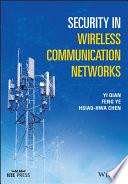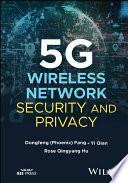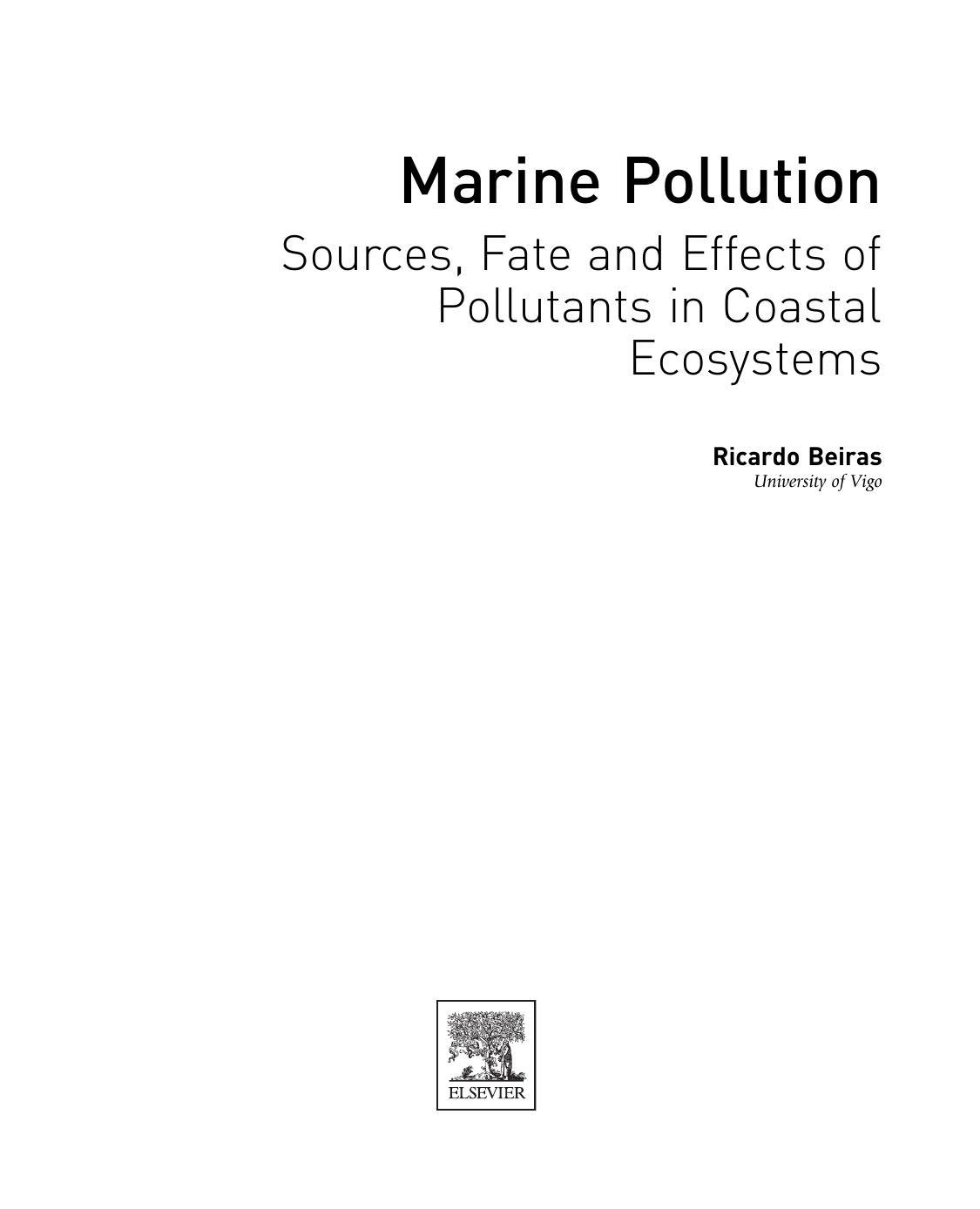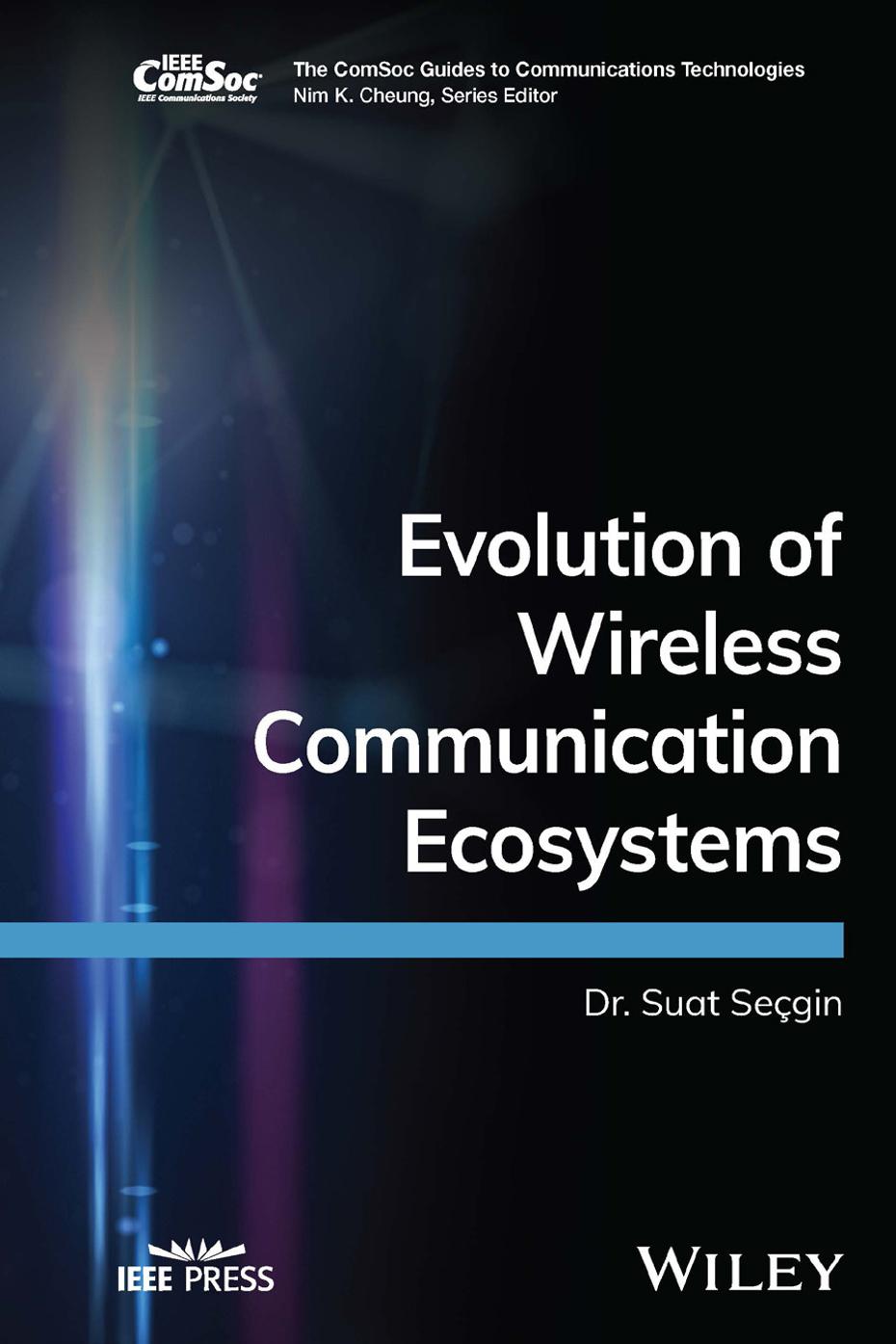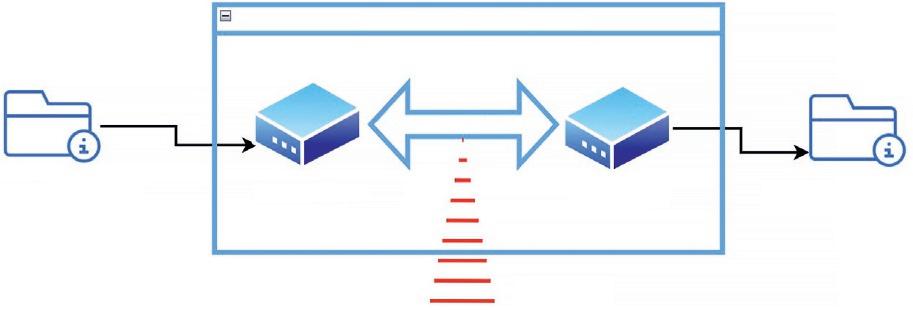Evolution of Wireless Communication Ecosystems
Dr. Suat Seçgin
The ComSoc Guides to Communications Technologies Nim K. Cheung, Series Editor
Copyright © 2023 by The Institute of Electrical and Electronics Engineers, Inc.
Published by John Wiley & Sons, Inc., Hoboken, New Jersey.
Published simultaneously in Canada.
No part of this publication may be reproduced, stored in a retrieval system, or transmitted in any form or by any means, electronic, mechanical, photocopying, recording, scanning, or otherwise, except as permitted under Section 107 or 108 of the 1976 United States Copyright Act, without either the prior written permission of the Publisher, or authorization through payment of the appropriate per-copy fee to the Copyright Clearance Center, Inc., 222 Rosewood Drive, Danvers, MA 01923, (978) 750-8400, fax (978) 750-4470, or on the web at www.copyright.com. Requests to the Publisher for permission should be addressed to the Permissions Department, John Wiley & Sons, Inc., 111 River Street, Hoboken, NJ 07030, (201) 748-6011, fax (201) 748-6008, or online at http://www.wiley.com/go/permission.
Trademarks: Wiley and the Wiley logo are trademarks or registered trademarks of John Wiley & Sons, Inc. and/or its affiliates in the United States and other countries and may not be used without written permission. All other trademarks are the property of their respective owners. John Wiley & Sons, Inc. is not associated with any product or vendor mentioned in this book.
Limit of Liability/Disclaimer of Warranty
While the publisher and author have used their best efforts in preparing this book, they make no representations or warranties with respect to the accuracy or completeness of the contents of this book and specifically disclaim any implied warranties of merchantability or fitness for a particular purpose. No warranty may be created or extended by sales representatives or written sales materials. The advice and strategies contained herein may not be suitable for your situation. You should consult with a professional where appropriate. Further, readers should be aware that websites listed in this work may have changed or disappeared between when this work was written and when it is read. Neither the publisher nor authors shall be liable for any loss of profit or any other commercial damages, including but not limited to special, incidental, consequential, or other damages.
For general information on our other products and services or for technical support, please contact our Customer Care Department within the United States at (800) 762-2974, outside the United States at (317) 572-3993 or fax (317) 572-4002.
Wiley also publishes its books in a variety of electronic formats. Some content that appears in print may not be available in electronic formats. For more information about Wiley products, visit our web site at www.wiley.com.
Library of Congress Cataloging-in-Publication Data applied for: Hardback ISBN: 9781394182312
Cover Design: Wiley
Cover Image: © Dr Pixel/Getty Images
Set in 9.5/12.5pt STIXTwoText by Straive, Pondicherry, India
“I dedicate this book to my mother Bedriye Seçgin, to whom I owe everything.”
Contents
About the Author xv
Preface xvii
List of Abbreviations xxi
1 Basіc Concepts 1
1.1 Introduction 1
1.2 Main Components of Communication Systems 1
1.3 Circuit, Packet, and Cell Switching 3
1.3.1 Circuit Switching 3
1.3.2 Packet Switching 4
1.3.3 Cell Switching 5
1.4 Duplexing in Communication 6
1.5 Historical Developments of Wireless Communication Systems 7 Reference 8
2 Modulation and Demodulation 9
2.1 Introduction 9
2.2 What Are Modulation and Demodulation? 9
2.3 Analog Modulation Methods 10
2.3.1 Amplitude Modulation 11
2.3.2 Frequency Modulation 11
2.3.3 Phase Modulation 11
2.4 Digital Modulation Methods 13
2.4.1 Amplitude Shift Keying (ASK) Modulation 13
2.4.2 Frequency Shift Keying (FSK) Modulation 13
2.4.3 Phase Shift Keying (PSK) Modulation 14
2.4.4 Quadrature Amplitude (QAM) Modulation 14
References 17
3 Multiplexing Methods 19
3.1 Introduction 19
3.2 Frequency Division Multiplexing 20
3.3 Time Division Multiplexing 22
3.4 Orthogonal Frequency Division Multiplexing 23
3.5 Non- Orthogonal Multiple Access 24
3.6 Wavelength Division Multiplexing 25
3.7 Code Division Multiplexing 26
3.8 Spatial Division Multiplexing 27
3.9 Orbital Angular Momentum Multiplexing 27
3.10 Polarization Division Multiplexing 30
References 31
4 Network Performance Metrics 33
4.1 Introduction 33
4.2 Spectral Efficiency 33
4.3 Important Network Performance Metrics 35
References 40
5 Seven Layers of ISO/OSI 41
5.1 Introduction 41
5.2 Application Layer 43
5.3 Presentation Layer 44
5.4 Session Layer 45
5.5 Transport Layer 45
5.6 Network Layer 46
5.7 Data Link Layer 48
5.8 Physical Layer 49
References 50
6 Cellular Communication and 1G Systems 51
6.1 Introduction 51
6.2 A Brief History of Wireless Communication 51
6.3 Cellular Communication 52
6.4 1G Systems 54
References 56
7 2G Systems 57
7.1 Introduction 57
7.2 1G and 2G Comparisons 57
7.3 2G Architecture 59
7.4 Detailed Infrastructure and 2.5G 62 References 64
8 3G Systems 65
8.1 Introduction 65
8.2 2G and 3G Comparison 65
8.3 3G Architecture 67
References 69
9 4G Systems 71
9.1 Introduction 71
9.2 Toward 4G 72
9.3 Services and Servers 75
9.4 Architectural Structure and Novel Concepts 77
9.4.1 Architectural Structure 78
9.4.2 IP Multimedia Subsystem (IMS) 79
9.5 Voice over LTE (VoLTE) 82
9.6 Mobile IP 84
9.7 Multiple Access Techniques 87
9.7.1 OFDM Access 87
9.7.2 Single Carrier-FDMA 89
9.8 Multiple Input-Multiple Output (MIMO) Antenna Systems and SDM Access 90
9.9 Voice over WiFi (VoWiFi) 92
References 94
10 5G Systems 97
10.1 Introduction 97
10.2 5G Cell Structure 101
Contents x
10.3 Topology 102
10.4 Millimeter Wave 106
10.5 Network Slicing 111
10.6 Massive MIMO and Beamforming 114
10.7 Carrier Aggregation (CA) and Dual Connectivity (DC) 116 References 118
11 6G Systems 119
11.1 Introduction 119
11.2 Network 122
11.3 Terahertz Communication 126
11.4 Visible Light Communication 128
11.5 Satellite Integration 131
11.6 Cloud Radio Access Network 132
11.7 Holographic MIMO Surfaces 135
11.8 Massive Cell-Free MIMO 140
11.9 Mobile Cloud Computing (MCC)–Mobile Edge Computing (MEC) 143
11.10 ML, AI, and Blockchain Usage in 6G 148
11.10.1 Machine Learning 149
11.10.2 Blockchain 152
11.11 Quantum Computing in Future Wireless Networks 155
11.12 5G Concepts in 6G (eMBB, uRLLC, and mMTC) 159
11.13 6G Use Cases 161
11.13.1 Virtual, Augmented, and Mixed Reality 161
11.13.2 Rural Areas/Depopulated Areas 163
11.13.3 Nonterrestrial Communication 164
11.13.4 Underwater Wireless Communications Systems 166
11.13.5 Super Smart Society 166
11.13.6 Holographic Telepresence 166
11.14 Comparison of 5G and 6G Network Architectures 169 References 170
12 Internet of Things (IoT) 177
12.1 Introduction 177
12.2 IoT Vision 178
12.3 Architecture and Communication Model 181 References 189
13 Non-IP-Based WPAN Technologies 191
13.1 Introduction 191
13.2 802.15 Standards 194
13.3 Radio Frequency Identification 195
13.4 Near-Field Communication 198
13.5 Infrared Data Association 198
13.6 Bluetooth 199
13.7 Zigbee 202
13.8 Z-Wave 207
13.9 Power Line Communication 209 References 210
14 IP-Based WPAN and WLAN 211
14.1 Introduction 211
14.2 HaLow WiFi (Low-Power WiFi) 211
14.3 ISA 100.11a Wireless 212
14.4 Wireless Highway Addressable Remote Transducer Protocol (HART) 215
14.5 Wireless Networks for Industrial Automation-Process Automation (WIA-PA) 216
14.6 6LoWPAN 218
14.7 WPAN with IP Thread 222
References 226
15 Low-Power Wide-Area Networks 227
15.1 Introduction 227
15.2 General Architecture 227
15.3 EC- GSM-IoT 228
15.4 Random Phase Multiple Access 230
15.5 DASH7 231
15.6 Long-Term Evolution for Machines 233
15.7 Narrowband IoT 234
15.8 Massive IoT 234
15.9 IoTivity 237
15.10 LoRa and LoRaWAN 238
15.11 Sigfox 241
References 243
16 IoT Edge to Cloud Protocols 245
16.1 Introduction 245
16.2 Message Queue Telemetry Transport Protocol 248
16.3 MQTT over WebSockets 251
16.4 MQTT for Sensor Networks 251
16.5 Constrained Application Protocol 253
16.6 Embedded Binary HTTP 256
16.7 Lean Transport Protocol 257
16.8 Advanced Message Queuing Protocol 258
16.9 Data Distribution Service 260
16.10 Simple Text- Oriented Messaging Protocol 263
16.11 Extensible Messaging and Presence Protocol 264
16.12 Lightweight M2M 266
16.13 Health Device Profile Protocol (Continua HDP) 268
16.14 Devices Profile for Web Services 270
16.15 Protocol Comparisons 271 References 274
17 Popular Operating Systems of IoT 277
17.1 Introduction 277
17.2 OpenWSN 278
17.3 TinyOS 279
17.4 FreeRTOS 279
17.5 TI-RTOS 280
17.6 RIOT 281
17.7 Contiki OS 282
References 284
18 IoT Security 285
18.1 Introduction 285
18.2 Limitations in IoT End Devices 285
18.3 Security Requirements 287
18.4 Attack Types and Points 290 References 298
19 IoT Applications 301
19.1 Introduction 301
19.2 Tactile Internet 301
19.3 Waste Management 304
19.4 Healthcare 304
19.5 Smart Agriculture and Smart Water Supply 305
19.6 Web of Things (WoT) 307
References 308
Index 311
About the Author
Dr. Suat Seçgin has worked in the telecommunication sector for nearly 30 years in access systems, core networks, IT, and customer management. After completing his Electrical and Electronics Engineering undergraduate education, Dr. Seçgin received his master’s degree in Computer Engineering on mobile networks and data access strategies. Subsequently, he earned his Ph.D. in Computer Engineering in data science and decision support systems. He has publications in peer-reviewed and indexed journals on customer analytics in the telecommunications industry, and this is his second book on telecommunication systems.
Preface
Since Alexander Graham Bell’s first “hello” (1876), communication systems have witnessed revolutionary developments. These communication systems, which used to work entirely in circuit-switching and wired transmission environments, are now turning into wireless systems, especially in access techniques, apart from the main backbone. Initially, copper wire circuits were used in communication, while fiber optic cables began in the 1990s. Today, fiber services are put into use in the home. In parallel with these developments in wired communication systems, wireless communication systems continue to develop rapidly. With the developments in multiplexing and modulation techniques, the bandwidth provided to each user is progressing at an increasing speed.
With the introduction of the Internet into our lives in the 1990s, Information Technologies and Communication Technologies began to converge. After this point, we started talking about Information Communication Technologies. Today, we live in scenarios where everything is connected to the vast Internet cloud with 4G, 5G, and 6G wireless communication systems. However, it is still in the fictional stage. Communication systems, previously used as discrete structures, are almost becoming living organisms thanks to this substantial interconnected communication infrastructure. It would be much more appropriate to call this cyber organism structure “Wireless Communication Ecosystem,” which extends from wireless sensor networks operating at the most extreme points to the edges. This is a gigantic ecosystem that extends from big data, artificial intelligence, blockchain, and machine learning to quantum communication on the one hand. The book is designed to explain the main elements of this ecosystem. If we liken this ecosystem to a human body, each body organ is introduced in the book.
Before going into the details of these systems, modulation and multiplexing techniques are also explained to understand the communication generations and to visualize the big picture in our minds. In addition to increasing the efficiency of the frequency spectrum, users were introduced to high-frequency and highbandwidth by using multiplexing techniques together. Systems that used to work
with classical circuit switching have evolved into packet switching-based systems that provide flexible and scalable solutions.
With the convergence of communication and information systems, information and communications technology (ICT) systems were developed that radically changed our daily lives and created super-intelligent societies. The support of software systems has led to paradigm shifts in network metrics such as management, security, configuration, scaling, resilience, and more.
Starting with 1G systems, we will talk about communication systems at terahertz levels that have developed due to spectrum-efficient modulation techniques and advances in electronic circuits. In addition, users can receive services at high bandwidths using three-dimensional multiplexing techniques.
Wireless communication systems, which continue to progress without slowing down, have evolved into the fifth-generation communication systems as of the 2020s. Communication speeds up to 20 GHz with 5G, and thanks to these speeds, the concepts of ultrareliable low-latency communication (uRLLC), enhanced mobile broadband (eMBB), and massive machine-type communication (mMTC) entered our lives. The transition occurred from the Internet of Things (IoT) to the Internet of Everything (IoE). Communication systems, applications, and services have become more intelligent using topics such as artificial intelligence, blockchain, and big data in the software field. Smart homes, smart cities, innovative health systems, and autonomous vehicles are now inseparable parts of our lives.
In the years when the book was written (2021/2022), 5G applications entered our lives, and the sixth-generation communication systems, which will be put into use starting from the 2030s, became talked about and fictionalized. Along with 6G, concepts such as 3D networks, intelligent networks, quantum communication, blockchain technologies, deep learning, and programmable surfaces are designed together with communication infrastructures.
The book’s primary purpose is to describe the big picture of wireless communication generations and applications running on this communication medium. The book describes the infrastructure of 4G, 5G, and 6G systems, this all-connected communication ecosystem, the subcomponents of this ecosystem, and the relationship among them.
Since IoT systems are an integral part of wireless communication infrastructure in parallel with 4G, 5G, and 6G systems, access techniques, protocols, and security issues for these systems are also explained in detail in our book. In addition to these access techniques, the methods used in M2M and IoT connections at the endpoints are given. Security is also a significant challenge in this ecosystem where everything is connected with everything. Vital security breaches, especially for terminals/users at the endpoint, are also described in the book.
In the first part, the basic concepts of communication systems are explained. In the following, the events seen in the capillaries of the communication echo
Preface xix
system are described by explaining the switching techniques, modulation, and multiplexing techniques. Thus, it is aimed at understanding the applications running at higher levels. With this aspect, the book has been designed to guide the reader who wants to advance in each subject. The book, which has a pervasive literature review for each section, is also an essential resource for researchers.
Dr. Suat Seçgin Electrical & Electronics Engineer (BSc) Computer Engineer (MSc & PhD)
List of Abbreviations
3GPP Third- Generation Partnership Project
6LoWPAN IPv6 over low-power WPANs
A-CSCF Access Session Border Controller
ADSL Asymmetric Digital Subscriber Line
AM Amplitude Modulation
AMPS Advanced Mobile Phone System
AMQP Advanced Message Queuing Protocol
ANN Artificial Neural Network
ASK Amplitude Shift Keying
ATM Asynchronous Transfer Mode
AuC Authentication Center
BBU Baseband Unit
BER Bit Error Rate
BGP Border Gateway Protocol
BICN Bearer-Independent Core Network
BSC Base Station Controller
BSS Base Station Subsystem
BTS Base Transceiver Station
CA Carrier Aggregation
CDM Code Division Multiplexing
CDMA Code Division Multiple Access
CDR Call Detail Record
CINR Carrier to Interference + Noise Ratio
CIR Channel Impulse Responses
CNN Convolutional Neural Network
CoAP Constrained Application Protocol
CPC Continuous Packet Connectivity
C-RAN Cloud/Centralized Radio Access Network
CSCP Call Session Control Function
List of Abbreviations
DAS Distributed Antenna System
DC Dual Connectivity
DDoS Distributed Denial of Service
DDS Data Distribution Service
DNS Domain Name System
DPWS Devices Profile for Web Services
D-RAN Distributed Radio Access Network
DSCP Differentiated Service Code Point
DTLS Datagram Transport Layer Security
EDGE Enhanced Data Rates for GSM Evolution
EIR Equipment Identity Register
eMBB Enhanced Mobile Broadband
EPC Evolved Packet Core
EV-DO Evolution-Data Optimized
FDD Frequency Division Duplexing
FDM Frequency Division Multiplexing
FDMA Frequency Division Multiple Access
FM Frequency Modulation
FSK Frequency Shift Keying
FTAM File Transfer, Access, and Management
FTP File Transfer Protocol
GAN Generative Adversarial Network
GEO Geosynchronous Equatorial Orbit
GERAN GSM Edge Radio Access Network
GGSN Gateway GPRS Support Node
GMSC Gateway Mobile Switching Center
GPOS General Purpose Operating System
GPRS General Packet Radio Service
GSM Global System for Mobile Communication
HART Wireless Highway Addressable Remote Transducer Protocol (HART)
HLR Home Location Register
HMIMOS Holographic MIMO Surfaces
HSDPA High-Speed Downlink Packet Access
HSPA High-Speed Packet Access
HSUPA High-Speed Uplink Packet Access
IFFT Inverse Fast Fourier Transformation
IMEI International Mobile Equipment Identity Number
IMS IP Multimedia Subsystem
IMSI International Mobile Subscriber Identity Number
IM-SSF IP Multimedia Services Switching Function
List of Abbreviations
IMT-2000 International Mobile Telecommunication Standard-2000
IN Intelligent Network
IP Internet Protocol
IrDA Infrared Data Association
ISDN Integrated Service Digital Network
ISI Intersymbol Interference
ISM Industrial, Scientific, and Medical
ISO International Organization for Standardization
ITU International Telecommunication Union
IWSN Industrial Wireless Sensor Network
LEO Low Earth Orbit
LiFi Light Fidelity
LLC Logical Link Control
LOS Line of Sight
LPWAN Low-Power Wide-Area Networks
LTE Long-Term Evolution
LTE-M Long-Term Evolution for Machines
LTP Lean Transport Protocol
M2M Machine to Machine
MAC Media Access Control
MAEC Multi-Access Edge Computing
MCC Mobile Cloud Computing
MCS Mobile Switching Center
MEC Mobile Edge Computing
MEO Medium Earth Orbit
MGW Media Gateway
MIMO Multiple Input Multiple Output
MIOT Massive IoT
MLP Multilayer Perceptrons
MME Mobile Management Entity
MMS Multimedia Messaging Service
mMTC Massive Machine-Type Communication
mmWave Milimeter Wave
MOM Message- Oriented Middleware
MQTT Message Queue Telemetry Transport Protocol
MSISDN Mobile Subscriber Integrated Services Digital Network Number
NAMPS Narrowband Advanced Mobile Phone
NB-IoT Narrowband IoT
NFC Near Field Communication
NFV Network Function Virtualization
NGN Next- Generation Networks
List of Abbreviations
NMT Nordic Mobile Telephone
NOMA Non- Orthogonal Multiple Access
NSS Network Subsystem
OAMM Orbital Angular Momentum Multiplexing
OFDM Orthogonal Frequency Division Multiplexing
OSA-GW Open Service Access Gateway
OSI Open System Interconnection
OTT Over the Top
OWC Optical Wireless Communication
PAN Personal Area Network
PAPR Peak to Average Power Ratio
PCRF Policy and Charging Rule Functions
P-CSCF Proxy Call Session Control Function
PCU Packet Control Unit
PDM Polarization Division Multiplexing
PDN Public Data Network
PDU Protocol Data Unit
PER Packet Error Rate
PGW PDN Gateway
PLC Power Line Communication
PLMN Public Land Mobile Network
PM Phase Modulation
POTS Plain Old Telephone System
PSK Phase Shift Keying
PSTN Public Switched Telephone Network
QAM Quadrature Amplitude Modulation
qDC Quantum-assisted Data Center
qEdge Quantum-assisted Edge Network
QKD Quantum Key Distribution
QML Quantum Machine Learning
QoE Quality of Experience
QoS Quality of Service
qRAN Quantum-assisted RAN
qSIN Quantum Space Information Network
qWAI Quantum-assisted Wireless Artificial Intelligence
RAN Radio Access Network
RAT Radio Access Technology
REST Representational State Transfer
RF Radio Frequency
RFID Radio Frequency Identification
RIS Reconfigurable Intelligent Surfaces
RNC Radio Network Controller
RNN Recurrent Neural Networks
RPMA Random Phase Multiple Access
RRH Remote Radio Head
RRU Remote Radio Unit
RTOS Real-Time Operating System
RTP Real-Time Transport Protocol
SCE Service Creation Environment
SCP Service Control Point
SC-PTM Single Cell-Point to Multipoint
SDM Spatial Division Multiplexing
SDN Software Defined Network
SE Spectral Efficiency
SGSN Serving GPRS Support Node
S-GW Serving Gateway
SIC Successive Interference Cancellation
SIM Subscriber Identity Module
SINR Signal Interference + Noise Ratio
SIP Session Initiation Protocol
SLA Service-Level Agreement
SMS Short Message Service
SMTP Simple Mail Transfer Protocol
SNR Signal to Noise Ratio
SOAP Simple Object Access Protocol
SON Self- Organizing Network
SS7 Signaling System Number 7
STOMP Simple Text- Oriented Messaging Protocol
TACS Total Access Communication System
TAS Telephony Application Server
TCP Transmission Control Protocol
TDD Time Division Duplexing
TDM Time Division Multiplexing
TDMA Time Division Multiple Access
TFTP Trivial File Transfer Protocol
TSCH Time Slotted Channel Hopping
UCA Uniform Circular Array
UCDC Unconventional Data Communication
UMTS Universal Mobile Telecommunication Standard
uRLLC Ultra-Reliable Low Latency Communication
UTRAN UMTS Radio Access Network
VLC Visible Light Communication
List of Abbreviations
List of Abbreviations
VLR Visitor Location Register
VoLTE Voice over LTE
VoWiFi Voice over WiFi
VPN Virtual Private Network
WAP Wireless Application Protocol
WCDMA Wideband Code Division Multiple Access
WDM Wavelength Division Multiplexing
WIA-PA Wireless Network for Industrial Automation-Process Automation
WiMAX Worldwide Interoperability for Microwave Access
WPAN Wireless Personal Area Network
WSDL Web Service Description Language
WSN Wireless Sensor Network
WWAN Wireless Wide Area Network
XMPP Extensible Messaging and Presence Protocol
Basіc Concepts
1.1 Introduction
The input of a communication system is a sound, image, or text file to be transmitted to the other end. The output is naturally this original information signal, which goes through many processes (modulation, coding, multiplexing, etc.) until it reaches the end. This section explains the layers through which the information passes from where it enters the system to where it leaves.
1.2 Main Components of Communication Systems
The main components of an end-to-end communication system are the transmitter, transmission medium, and receiver (Figure 1.1). Any factor that negatively affects the operation of the system is called noise.
● Information source: The first step in sending a message is to convert it into an electronic form suitable for transmission. For voice messages, a microphone is used to convert the sound into an electronic audio signal. For TV, the camera converts the light information in the scene into a video signal. In computer systems, the message is typed on the keyboard and converted into binary codes that can be stored in memory or transmitted in serial. Transducers convert physical properties (temperature, pressure, light intensity, etc.) into electrical signals.
● Transmitter: The transmitter is a collection of electronic components and circuits designed to convert the electrical signal into a signal suitable for transmission over a given communication medium. Transmitters consist of oscillators, amplifiers, tuned circuits and filters, modulators, mixers, frequency synthesizers, and
Evolution of Wireless Communication Ecosystems, First Edition. Suat Seçgin.
© 2023 The Institute of Electrical and Electronics Engineers, Inc.
Published 2023 by John Wiley & Sons, Inc.
other circuits. The original signal is usually modulated with a higher frequency carrier sine wave produced by the transmitter and amplified by power amplifiers. Thus, the information signal is rendered transmittable in the transmission medium.
● Communication channel: The communication channel is the medium in which the electronic signal is sent from one place to another. Many media types are used in communication systems, including wire conductors, fiber optic cable, and free space. Of these, electrical conductors can be a pair of wires that carry an audio signal from the microphone to the headphone. It could be a coaxial cable similar to that used to have signals. Or it could be a twisted-pair cable used in a local area network (LAN). The communication medium may also be a fiber optic cable or “light pipe” that carries the message on a light wave. These are used today to carry out long-distance calls and all Internet communications. The information is converted into a digital form that will be used to turn a laser diode on and off at high speeds. Alternatively, audio or video analog signals can be used to vary the amplitude of the light. When space is media, the resulting system is known as radio. Radio, also known as wireless, is the general term applied to any form of wireless communication from one point to another. Radio makes use of the electromagnetic spectrum. Information signals are converted into electric and magnetic fields that propagate almost instantly in space over long distances.
● Receiver: The receiver is a collection of electronic components and circuits that accepts the message transmitted through the channel and converts it back into a form that can be understood. Receivers include amplifiers, oscillators, mixers, tuned circuits and filters, and a demodulator or detector that retrieves the original information signal from the modulated carrier. The output is the initial signal that is then read or displayed. It can be an audio signal sent to a speaker, a video signal fed to an LCD screen for display, or binary data received by a computer and then printed or displayed on a video monitor.
Figure 1.1 Block schema of a communication system.

